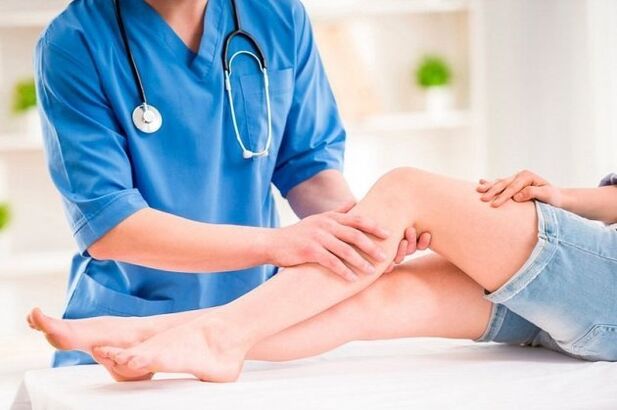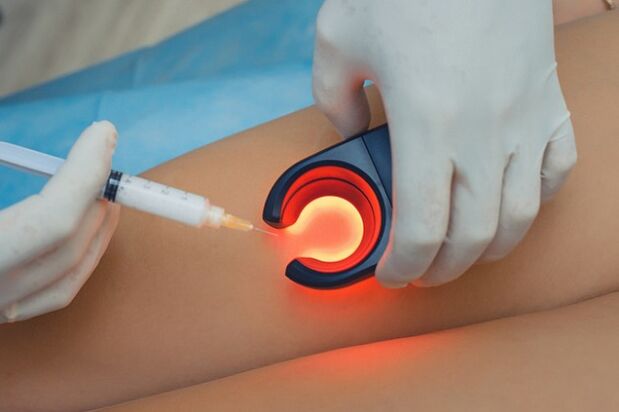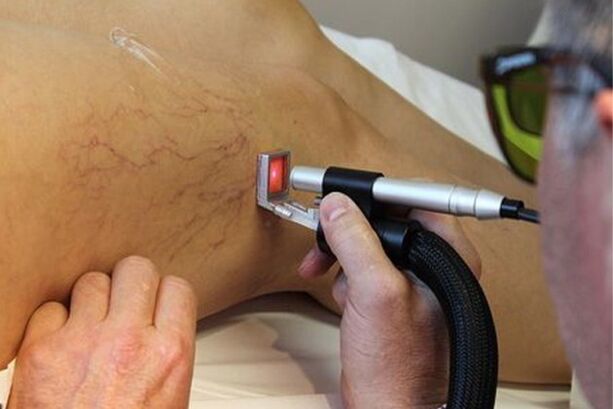
compression jersey
- Knee socks, pantyhose, stockings;
- Elastic bandage.
drug
pill
- blood thinners;
- anti-inflammatory (drug;
- Intravenous Infusion.
topical treatment
- Based on glycosaminoglycans;
- Based on natural ingredients (horse chestnut, sweet clover, broomstick);
- nonsteroidal anti-inflammatory drugs;
- Hormones.
Leech treatment
- Reduce tissue swelling;
- blood thinning;
- Prevent thrombosis;
- relieve pain;
- Strengthen blood vessel walls.
Perform venous sclerotherapy

puncture method
- Platelet depolymerizing agents (for blood thinning);
- Thrombolytics (dissolve existing blood clots);
- Drugs that improve blood microcirculation.
radiofrequency ablation
surgical correction
- Phlebectomy.Surgery to remove the damaged vein. Duration – approximately 1. 5 hours, performed under general anesthesia. The recovery period can last up to 3 months. After surgery, there is a risk of permanent scarring.
- Electrocoagulation.The method is based on the removal of tissue by evaporation of water under the influence of direct current. The effectiveness of this method depends on the depth of exposure to high-frequency current. Coagulation is used to treat blood vessels, warts, hemorrhoids, and papillomas.
- Cryosurgery treatment.It is a widely used treatment method. The treatment is based on the effects of high temperatures on the affected veins. Under the influence of cold, the body begins to defend itself, which is manifested by the activation of regeneration processes of damaged tissues. For best results, 3-5 sessions are required. It is used to treat reticular varicose veins (stage I) and 2nd and 3rd degree venous disease.
- Hardening is eliminated.A simple yet effective procedure that involves puncturing varicose veins. At the site of injury, the endothelial layer is destroyed and fibrous tissue forms. With appropriate compression, the damaged and fibrous changes in the vessel wall grow together and the vessel lumen is completely closed. The procedure consists of 5-7 sessions, but the likelihood of complete disappearance of the affected vein after treatment is significantly increased.
- Perform endoscopic dissection.This method is a type of subfascial ligation. In other words, the affected vein is ligated (cut) through a remote surgical approach using endoscopic instruments. There will be no marks or scars left after the procedure.
- Laser Treatment.An effective, highly accurate and safe method of removing affected veins. All treatments involve local heating of the vein wall and its subsequent hardening. The advantage of this method is that only one process is required.

traditional method
- essential oils;
- apple cider vinegar;
- Raw potato applications;
- Aloe vera juice treats ulcers;
- cabbage leaves;
- Apitherapy – Treatment with bee products.
lifestyle
- active lifestyle;
- Eliminate bad habits;
- Stand for a long time to charge;
- Wear comfortable shoes (you can alternate between wearing heels and wedges several times a day);
- Eat a balanced diet to prevent constipation;
- Correct body weight by increasing body mass index;
- Follow the drinking regime;
- Regular exercise can treat varicose veins.

















